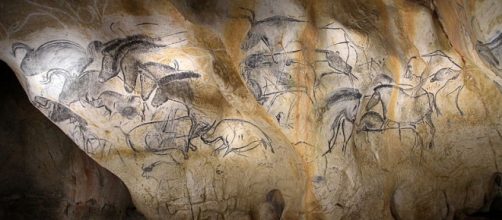Brief explanation of the history of painting
The history of artistic painting dates back to pre-historic times and continues throughout history for thousands of years, until the present time. Deriving from his natural inclination for self expression, man has outpoured a great and varied amount of creativity, that includes all major cultures of the world, and which is filled with colors and motifs that have captured the senses of those who witnessed these creations both past and present.
In developing the creativity of painting, man has represented either real or semi-real objects; found in the real world and in nature.
Some have been created with realism, while others have been given certain characteristics that have impressed those who have witnessed them, and others have caused certain controversy for the hidden theme within them.
Evolution of Painting
As painting evolved, and extended through the ages, man has found other means of inspiration. In the beginning were animals and the tools used for hunting them, many painting creations have been derived from other fine arts, such as sculpture and architecture; however, it was religion from which painting became more prolific during the middle ages and Renaissance.
From here, other techniques and tendencies have been created, including self portraits, landscapes, frescos, murals, canvases, highly developed depictions of figures, and scenes of landscapes and pictorial battles of cultural themes.
In the past two centuries, painting went through a series of transformations that set it apart as a commercial form of art.
More symbolic than realistic
It's not really known the exact meaning behind cave painting, in pre-historic times; however, the vague idea is that given the natural need for expressing himself, man painted the animal figures to perpetuate the world around. The paintings often contained hunting tools, such as arrows, which suggests the preservation of his customs.
Another more vague idea relates the animal figures to a means of connecting the living with the dead, giving them more symbolic significance. There is also a lack of realism found as the varied paintings are not symmetrical in form with their real counterparts.
Other paintings show hybrids of human-animal figures, suggesting certain beliefs in morphological transformations.
Early Paintings
The earliest paintings date some 40 thousand years in time. They are often found depicted on the walls of caves throughout the world. They often show the figures of animals which sometimes do not conform in ideal to the figures of real animals, as they lack the perfectionism of lines and forms. In expressing these art forms, man may have wished to preserve his own environment and the means he utilized for survival. He also relied on his own beliefs of the natural and unnatural world.
Through the ages
Over time, man learned to recreate objects closer to reality, but it was in the late 18th century that painting art began to be created from real contemporary people and ordinary events in life that portrayed the cultural transformations of that era.
At the beginning of the 20th century, other forms of painting art began to appear and with them varied art techniques which tended to delight and embellish by the use of bright colors and geometric figures that depicted human-like figures and objects.
Modern painting art forms have influenced other art movements, including architecture, film making, dance, theater, poetry, and photography as a passtime. Painting has also transformed the way in which modern companies advertise their products through mediums, including media and advertisements in public places.
Some contemporary painting artists held that contemporary painting art could have a close connection with vibrations stemming from sound and music. In this regard, the art of painting has gone through not only aesthetic transformations, but also very radical intellectual transformations.

